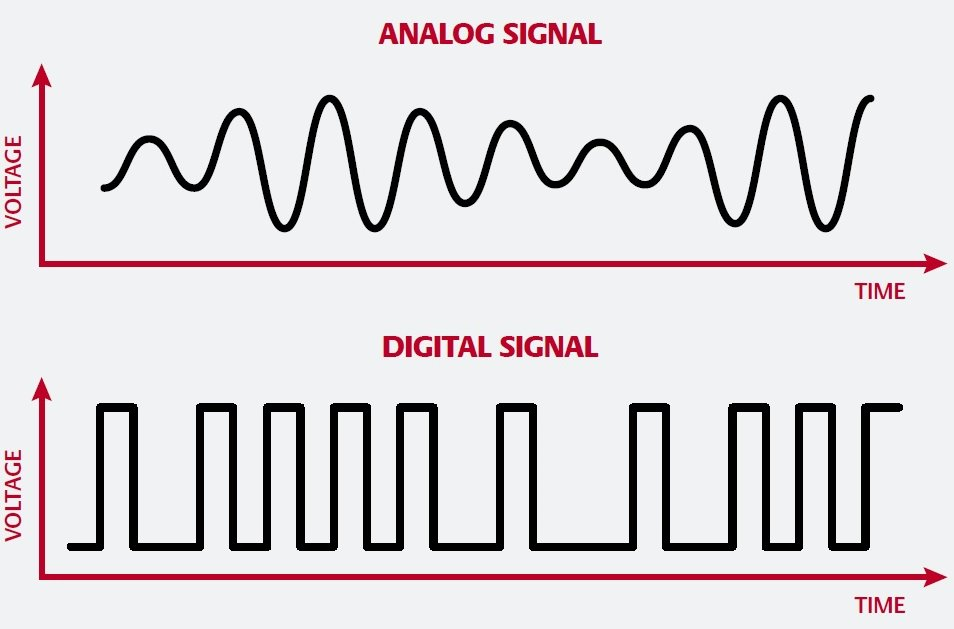Analog vs Digital Signals
When comparing analog and digital signals, it is essential to understand the fundamental differences between them, especially in terms of their properties and behaviours.
Analog vs Digital Signal
Analog Signals
Analog signals are continuous waveforms representing data as a function of time. These signals vary infinitely and can assume any value within a specified range. Unlike digital signals, analog signals do not have discrete values; instead, they exhibit smooth transitions between different states.
Properties:
- Continuity: Analog signals are inherently continuous, meaning they can take on any value within a particular interval.
- Noise Sensitivity: Because analog signals are continuous, even slight variations in the signal can introduce noise, making it difficult to distinguish between meaningful data and unwanted interference.
- Representation: Analog signals are often described mathematically using equations that reflect their continuous nature. For instance, sinusoidal waves are classic representations of analog signals.
Example Applications:
- Audio Equipment: Audio recordings and live sound systems frequently employ analog signals to capture and reproduce audio information.
- Thermometers: Traditional thermometers display temperature measurements using analog dials that indicate temperatures through continuous movements.
Digital Signals
Digital signals, on the other hand, represent data as sequences of discrete values. These signals are composed of distinct levels or states that can only take on predefined values at specific instances in time.
Properties:
- Discreteness: Digital signals are fundamentally discrete, meaning they can only occupy one of a finite set of predetermined values.
- Noise Immunity: Despite having fewer states than analog signals, digital systems benefit from inherent noise immunity due to quantization processes used during signal conversion. Small changes in voltage levels typically correspond to different discrete states rather than gradual variations.
- Representation: Digital data is represented using binary numbers (0s and 1s) or higher-order representations like hexadecimal codes. Each bit represents a distinct logical value.
Example Applications:
- Computers & Electronics: Modern computing relies heavily on digital technology for processing information stored in memory chips and transmitted through networks.
- Communication Systems: Telephone conversations are converted into digital formats before transmission via cellular networks or internet protocols like VoIP (Voice over Internet Protocol).
- Control Systems: Industrial automation uses programmable logic controllers (PLCs) which operate based on discrete inputs/output conditions making decisions accordingly based upon predefined rules/logic gates implemented therein…
